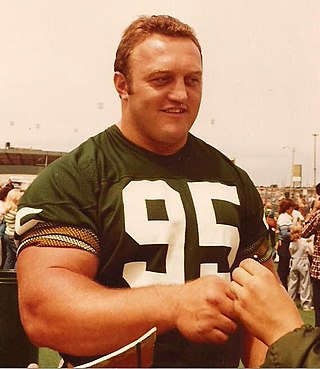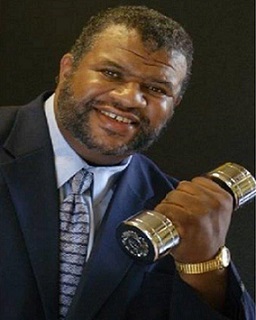
Weightlifting is a sport in which athletes compete in lifting a barbell loaded with weight plates from the ground to overhead, with the aim of successfully lifting the heaviest weights. Athletes compete in two specific ways of lifting the barbell overhead. The snatch is a wide-grip lift, in which the weighted barbell is lifted overhead in one motion. The clean and jerk is a combination lift, in which the weight is first taken from the ground to the front of the shoulders, and then from the shoulders to over the head.

Powerlifting is a strength sport that consists of three attempts at maximal weight on three lifts: squat, bench press, and deadlift. As in the sport of Olympic weightlifting, it involves the athlete attempting a maximal weight single-lift effort of a barbell loaded with weight plates. Powerlifting evolved from a sport known as "odd lifts", which followed the same three-attempt format but used a wider variety of events, akin to strongman competition. Eventually, odd lifts became standardized to the current three.

A barbell is a piece of exercise equipment used in weight training, bodybuilding, weightlifting, powerlifting and strongman, consisting of a long bar, usually with weights attached at each end.

William Kazmaier is an American former world champion powerlifter, world champion strongman and professional wrestler. During the 1970s and 1980s, he set numerous powerlifting and strongman world records, and won two International Powerlifting Federation (IPF) World Championships and three World's Strongest Man titles. In the 1980s, Kazmaier became famous for his claim to be "the strongest man who ever lived" by equaling and surpassing spectacular and versatile feats of strength of famous strongmen of the 20th century. He is widely considered to be one of the all-time greatest competitors in strength competitions and was inducted into the International Sports Hall of Fame in 2017.
Donald C. Reinhoudt was an American powerlifter and strongman. He won the IPF World Powerlifting Superheavyweight Championship four consecutive times (1973–1976), and won the World's Strongest Man in 1979.
Lamar Gant is an American world record-holding powerlifter. He competed with idiopathic scoliosis. He was inducted into the International Powerlifting Federation Hall of Fame in 1980.
Bench press world records are the international records in bench press across the years, regardless of weight class or governing organization, for bench pressing on the back without using a bridge technique.

Anthony Wayne Clark was an American powerlifter, holder of the world record for the reverse-grip bench press and member of the York Barbell Hall of Fame.

Edward Coan is an American powerlifter. He is widely regarded throughout the powerlifting world as the greatest powerlifter of all time. Coan has set over 71 world records in powerlifting.
Larry Pacifico is an American former world champion powerlifter.
Brad Gillingham is an American world champion powerlifter and strongman competitor from Minnesota, United States.
Truman Hugh Cassidy, better known as Hugh Cassidy, is an American metal sculptor, jazz musician, and former powerlifter who competed in powerlifting just prior to the formation of the International Powerlifting Federation (IPF). In 1971, he became U.S. National Powerlifting Champion as well as World Powerlifting Champion at the inaugural Amateur Athletic Union (AAU) World Championships, defeating the young soon-to-be all-time greats Jim Williams and John Kuc in the super heavyweight division.
Blaine Sumner is an American world champion powerlifter from Conifer, Colorado, currently residing in Gillette, Wyoming, United States.
John Kuc is a former world champion powerlifter from the United States. During the 1970s and 80s, he set numerous powerlifting national and world records, won three International Powerlifting Federation (IPF) world championships and numerous national championships.
Jon Frederic Cole was a powerlifter, Olympic weightlifter and strongman from the United States. He competed in powerlifting just prior to the formation of the International Powerlifting Federation (IPF). Having set world records in the squat, deadlift and Total during his career, he was multiple times AAU US National Powerlifting Champion as well as an outstanding Olympic weightlifter, discus thrower and shot-putter. Being the "premier strongman" of the early 1970s for his overall excellence in powerlifting, Olympic lifting and strength-based track and field, Cole was at one time known as the "strongest man in the world" for holding the greatest combined powerlifting/weightlifting super total of all time. Jon Cole was not only officially the first man in history to total 2200 lbs, he also became the first man to squat over 900 lbs as well as the first to total 2300 lbs in competition on October 28, 1972. Today, he is enjoying legendary status in the powerlifting scene and is widely considered to be one of the all-time greatest powerlifters in the history of the sport. His lifts, which are considered as raw by today's standards, are still mostly unequaled in his weight class: He still holds the all-time greatest raw (unequipped) powerlifting totals in the 242 and the 308-pound division. While past his prime as a lifter, he competed in the first annual World's Strongest Man competition in 1977, where he finished in 6th place.
James Talbot Williams was a record holder professional competitive powerlifter from the United States of America. He competed in powerlifting just prior to the formation of the International Powerlifting Federation (IPF). During the early 1970s he set bench press national and world records in the Amateur Athletic Union (AAU). On November 9, 1972, he performed bench press of 675 lbs. Jim Williams was the first man to bench press 300 kg (661.41 bs) in competition the international governing body for the sport of powerlifting.
John Haack is an American powerlifter and chemist. He is the current world record holder in the raw 90 and 100 kilogram weight class. He set the previous 82.5 kg world record of 907.5 kg on August 3, 2019, at the age of 26 at the Tribute powerlifting meet in San Antonio, Texas. For this total, he squatted 312.5 kg, bench pressed 232.5 kg, and deadlifted 362.5 kg. This total beat his own previous records of 890 kg and 875 kg. The previous record holder in this weight class was Maliek Derstine, with a total of 862.5 kg on January 23, 2016.
Brady Anthony Stewart is an American weightlifter. He was born on July 21, 1982, in St. Louis Missouri. Stewart is an 8-time US National Bench Press Team member for USA Powerlifting(Luxembourg 2009, Lithuania 2013, Sweden 2015, Denmark 2016, Lithuania 2017, South Africa 2018, Japan 2019, Czech Republic 2020[canceled due to Covid-19]). Stewart is the current American Record holder in the 120 kg / 264 lbs weight class with a press of 356.5 kg or 785.9 lbs. Stewart is the only lifter in US history to have medaled in IPF OPEN World Equipped Bench Press Championship competition in the 264 lbs weight class. He is also a member of the historic 2009 World Champion US National Bench Press Team.

Michael Hall is a retired American powerlifter, who is perhaps best known for being a pioneer of the drug-free movement in powerlifting. Hall is considered the first African American Super Heavyweight powerlifter to win a World Powerlifting Championship.

Matthew Yap Zhe Ren, 叶哲仁 is a Singaporean Powerlifter & Coach, a 4-time Asian Champion and a World Silver medallist. He has broken 4 World records, 13 Asian records and 44 National records. He has also coached his team to several victories on the international stage.









